Home › Q&A
Learning Scales Using CAGED
Question by Doug
(Draper, UT)
The CAGED method has me confused. One teacher/web site will call the C-shape position "1" while another will call the E-shape position "1".
Should I just memorize the 5 shapes and their root note(s) positions?
Do the shapes always go in sequence? Meaning if I start with the E-shape on the 5th Fret, to play the A major scale, should I then play the D-shape below it and the G-shape above it?
If I want to start at the top of the neck, and someone says play a B- scale, how should I choose the shape? Based on the roots I guess?
Thank you in advance for your advice. I like the site
Suggestions
Hey Doug,It's common for the C shape to be considered the 1st position in CAGED for two reasons:
1) Because when talking about major chords, keys and scales, C major tends to be the default example, therefore the C shape becomes the "starting point".
2) Because C is the first letter in the CAGED acronym!
I've personally always thought of the E-shape and its related pattern as the 1st position, since it "starts" on the 6th string, i.e. the root is the lowest note in the shape/pattern.
In reality, there is just an ordered sequence of patterns, no matter which one you start on - CAGED, AGEDC, GEDCA, EDCAG, DCAGE.
Memorizing the CAGED patterns
If you want to learn through CAGED then, yes, I would recommend simply memorizing the 5 shapes/patterns and their root note positions.Only think of these patterns as an ordered sequence in terms of their relationship to one another on the fretboard.
When it comes to actually playing them, you're best off testing your knowledge by picking a random chord and position in your mind and seeing if you can jump straight to that position without thinking too much about it.
Once you have the positions nailed, it's crucial (it really is!) that you work on merging them so you can move between patterns seamlessly, for any given root, and get out of "box think".
Start by connecting the 1st (E) and 2nd (D) patterns...
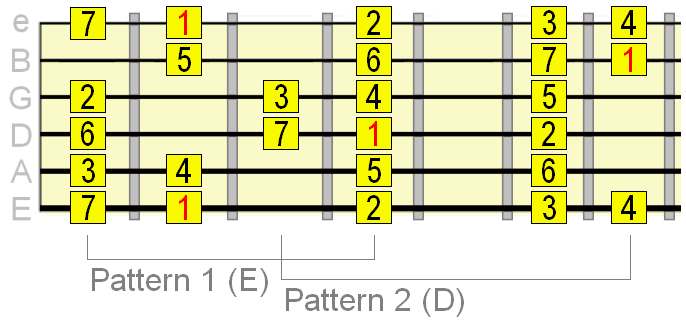
Then merge the 2nd (D) and 3rd (C) patterns...
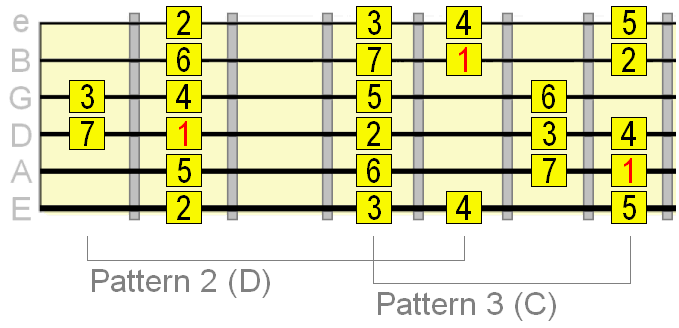
Then connect the 3rd (C) and 4th (A) patterns...
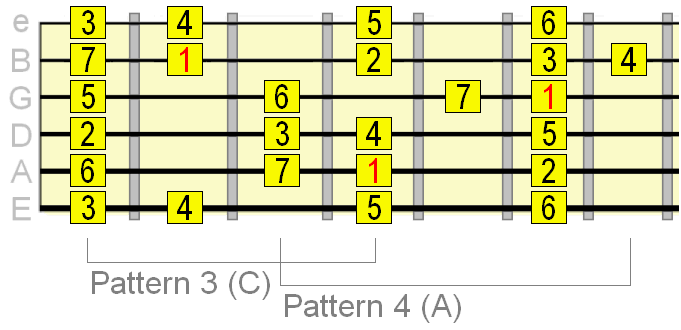
The 4th (A) and 5th (G) patterns...
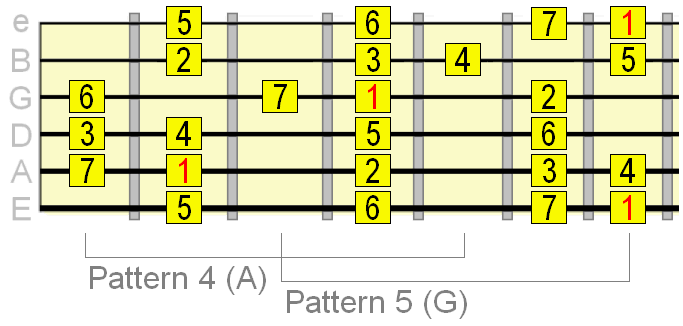
And finally link the 5th (G) to the 1st (E) pattern...
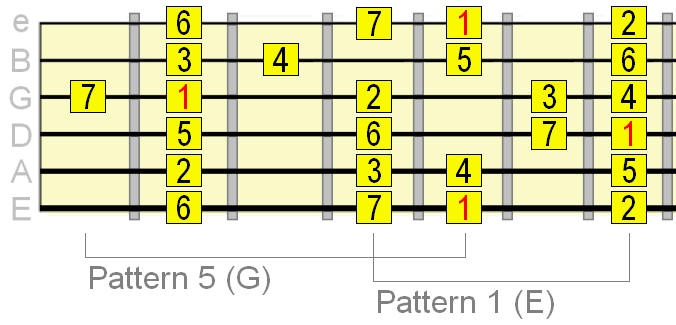
Once you have the patterns memorized for a number of different roots (and therefore keys), you can try the following exercises to link the patterns together.
In this example I'm using C major, starting on the 1st pattern (8th fret) and moving through the other 4 patterns back to the 1st pattern an octave higher (20th fret).
The fingering is in blue (as you can see it's a repetitive 1 2 4 fingering pattern)...
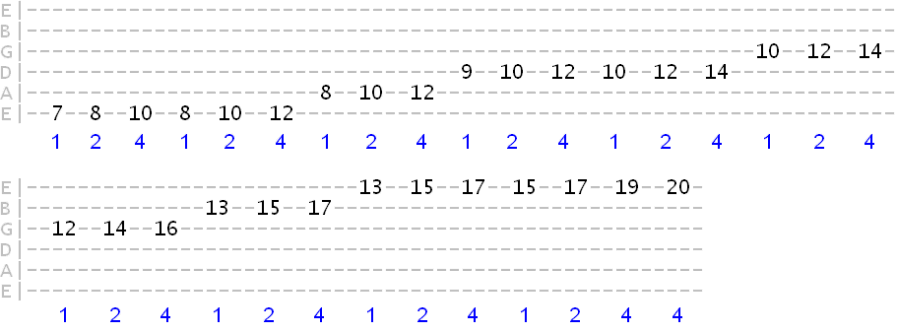
And in C major again, this time starting from the 4th CAGED pattern (3rd fret)...
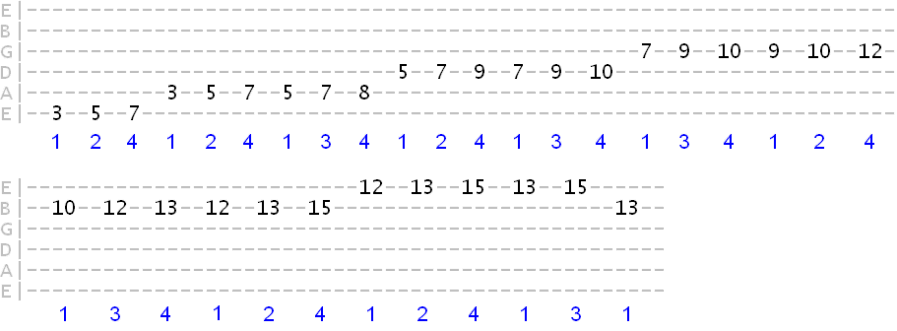
Try also working down these exercises from high to low.
Use a metronome and increase by 10bpm once you can play at the current tempo flawlessly.
This merging of the patterns will allow for more fluid, quicker movements across the fretboard and the use of legato techniques such as sliding.
As for which position to start on - this isn't really important. Just find a root and work from there, see where it takes you.
I've got into the habit of finding roots on the E and A strings.
Don't expect CAGED to be a magic bullet as so many do. If it helps you memorize the fretboard, then great, but when you come to learning scales and chords with sharp and flat intervals, you'll need to either adjust these major CAGED patterns or start a fresh set of patterns using the scale's intervals.
And don't forget to work on 3 notes per string patterns, which allow you to navigate scales in a far more efficient, economical way, allowing for elaborate legato runs, for example.
The important thing is, with any patterns you learn, that you can identify the root on at least the E and A strings and work on merging these "box" patterns to allow free and unrestricted movement across the fretboard.
That way, your fingers won't become "CAGED in" (...haha).
Share Your Comments
|
||
|
||
|
||
|
||
|
||